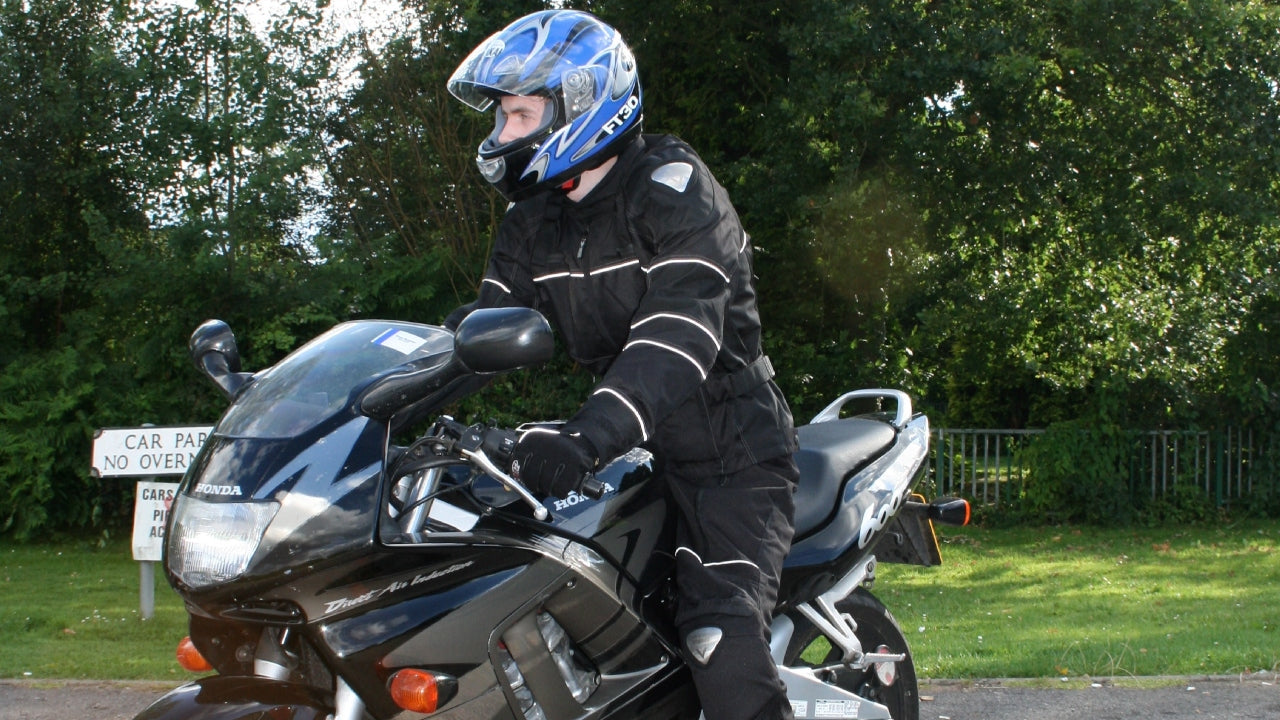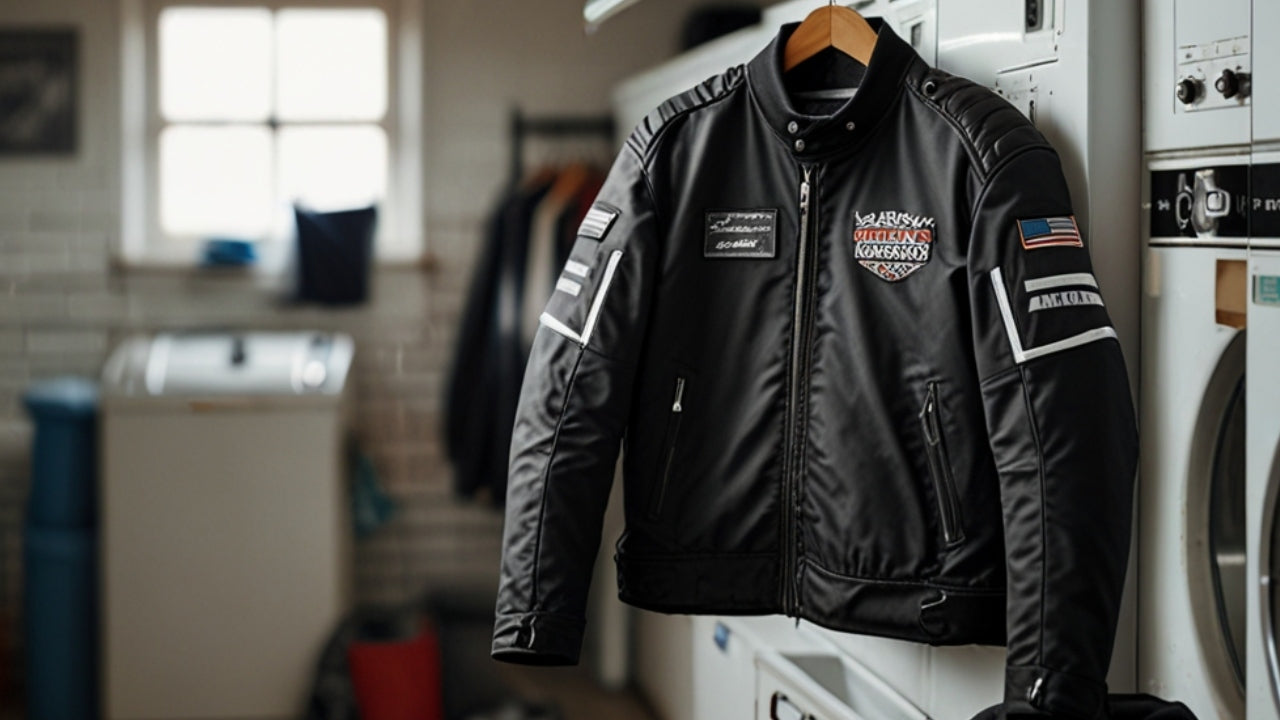
How Should A Motorcycle Jacket Fit?
Why Fit Matters for Motorcycle Jackets
Motorcycle jackets need to fit for a lot of reasons. How should a motorcycle jacket fit, and why does it need to be so? Let's talk in detail.
Safety Considerations
When you're zipping down the highway, the last thing you want to worry about is whether your jacket will protect you if you take a spill. A proper fit ensures that all the protective elements in the coat, like armor and padding, stay in place and do their job.
Impact Protection
A well-fitting jacket keeps the armor in place over critical areas like your shoulders, elbows, and back. If your jacket is too loose, the armor can shift, leaving you vulnerable in a crash.
Abrasion Resistance
Your jacket needs to stay put during a slide. If it's too loose, it can ride up, exposing your skin to the pavement, which defeats the purpose of wearing protective gear.
Comfort and Mobility
Long rides can be grueling if your jacket isn't comfortable. A well-fitting coat allows for a full range of motion, making it easier to handle your bike and reducing fatigue.
Long Ride Comfort
A jacket that fits well doesn't pinch, squeeze, or rub in the wrong places. This means fewer distractions and more focus on the road.
Range of Motion
You need to be able to move freely, whether you're leaning into a turn or checking your mirrors. A jacket that's too tight or too loose can restrict your movements, making your ride less enjoyable and more dangerous.
Key Areas to Focus on for Fit In A Motorcycle Jacket
Shoulders
Shoulders come first when we're talking about how a motorcycle jacket should fit. Your shoulders should fit snugly within the coat without being tight. You need to ensure that the shoulder armor is perfectly positioned over your shoulders. A snug fit here ensures the armor stays in place, and you can move your arms freely. This is critical for maintaining control of your bike.
Chest
Your chest should feel comfortable without feeling squeezed. There should be enough room to wear a base layer or two underneath, but not so much that the jacket is baggy. The jacket should contour to your body, providing support without restriction. You should be able to take deep breaths comfortably.
Waist
Many jackets come with adjustable waistbands, which help to tailor the fit to your body shape. This prevents the coat from flapping in the wind. An adjustable waist ensures a snug fit, enhancing both safety and comfort by keeping the jacket securely in place.
Sleeves
Sleeve length is crucial. When you're riding, your arms are extended, so the sleeves need to be long enough to cover your wrists without riding up. The sleeves should extend past your wrists when your arms are outstretched, but they shouldn't be so long that they bunch up when your arms are relaxed.
Torso Length
Your jacket should cover your lower back even when you're leaning forward on your bike. This not only adds to your comfort but also provides additional protection. The jacket should be long enough to cover your waistband and not ride up, which can leave you exposed and uncomfortable.
Types of Motorcycle Jackets and Their Fits
Leather Jackets
Leather is a popular choice due to its durability and abrasion resistance. However, leather jackets can be less forgiving in terms of fit compared to textile options. Leather needs to fit snugly but will break in and mold your body over time. Initially, it might feel stiff, but it will become more comfortable with wear.
Textile Jackets
Textile jackets offer more versatility, especially in varying weather conditions. They are often lighter and can have more features, like ventilation and waterproofing. Textile jackets can provide a more relaxed fit and are typically easier to adjust with features like Velcro straps and expandable panels.
Important: If you're looking for textile motorcycle jackets that make your ride a dream, remember to visit the Wadler store.
Mesh Jackets
For hot-weather riding, mesh jackets are a great option. They offer maximum airflow while still providing protection. Mesh jackets should fit similarly to textile jackets, but pay extra attention to the fit of the armor, as these jackets rely on precise positioning for safety.
How to Measure for a Motorcycle Jacket
To measure yourself accurately, you'll need a flexible tape measure, a friend to help, and a pen and paper to record your measurements.
Step-by-Step Measurement Guide
Shoulders
Measure across the back from shoulder seam to shoulder seam. This helps ensure the jacket isn't too tight across your shoulders.
Chest
Wrap the tape measure around the fullest part of your chest, under your armpits. This gives you the most accurate chest size.
Waist
Measure around your natural waistline, where your body bends. This is crucial for ensuring a comfortable fit that won't squeeze when you're riding.
Arm Length
From the top of your shoulder, measure down to your wrist. This helps ensure the sleeves are the correct length.
Torso Length
Measure from the base of your neck down to your waist. This ensures the jacket is long enough to provide coverage and protection.
Trying On Your Motorcycle Jacket
Here are key factors to keep in mind when you're trying your motorcycle jacket for the first time.
Initial Fit Check
When you first put on the jacket, it should feel snug but not overly tight. You should be able to zip it up without too much effort.
Moving Around in the Jacket
Once you have the jacket on, move around to see how it feels. Stretch your arms, bend over, and simulate your riding position.
Riding Position Test
Sit on your bike or a similar surface and lean forward. Make sure the jacket doesn't restrict your movement or ride up your back.
Everyday Movements
Perform common movements like reaching up, hugging yourself, and twisting your torso. The jacket should allow for these movements without discomfort.
Common Fit Issues and Solutions
Jacket Too Tight
If your jacket is too tight, it can restrict your movement and cause discomfort. Consider wearing thinner base layers or having the jacket professionally altered.
Jacket Too Loose
A loose jacket can cause the armor to shift and expose you to greater risk. Use built-in adjustments or layer up to improve the fit.
Sleeve Length Problems
If the sleeves are too short or too long, it can be distracting and uncomfortable. Look for jackets with adjustable cuffs, or consider tailoring.
Conclusion
Finding the perfect motorcycle jacket is about balancing safety, comfort, and style. By understanding how a motorcycle jacket should fit and what to look for, you can ensure you're well-protected and comfortable on the road. Remember to measure carefully, try on different styles, and don't hesitate to make adjustments for the best fit.
FAQs
How tight should a motorcycle jacket be?
A motorcycle jacket should be snug but not restrictive. You should be able to move comfortably and have enough room for a base layer.
Can I wear a regular leather jacket for riding?
Regular leather jackets lack specific protection features like armor and abrasion resistance. It's best to wear a jacket designed for motorcycle riding.
What if my jacket feels too tight when new?
Leather jackets, in particular, tend to break in and become more comfortable over time. If it's uncomfortably tight, consider getting a different size or style.
Are there different fits for men and women?
Yes, motorcycle jackets are often tailored differently for men and women to accommodate different body shapes. Make sure to try on jackets designed for your gender for the best fit.
How do I know if my jacket is too loose?
If your jacket allows the armor to shift or feels baggy, it's too loose. Use the adjustable features or consider a smaller size.




Leave a comment
This site is protected by hCaptcha and the hCaptcha Privacy Policy and Terms of Service apply.